Abstract
1. Oxygen consumption rates and levels of spontaneous activity were recorded simultaneously for mice, both singly and in groups, over 24 hr periods at temperatures ranging from 8 to 37° C.
2. There was marked 24 hr variation in both metabolic rate and activity, with maxima during the night; the amplitude of the variation diminished at the lower environmental temperatures.
3. At 28-33° C environmental temperatures, increased activity was associated with an increased oxygen consumption rate.
4. At 8 and 15° C, increased activity was accompanied by only a small increase in oxygen consumption.
5. These results show that thermogenesis from spontaneous activity can take the place of thermoregulatory heat production in the cold.
Full text
PDF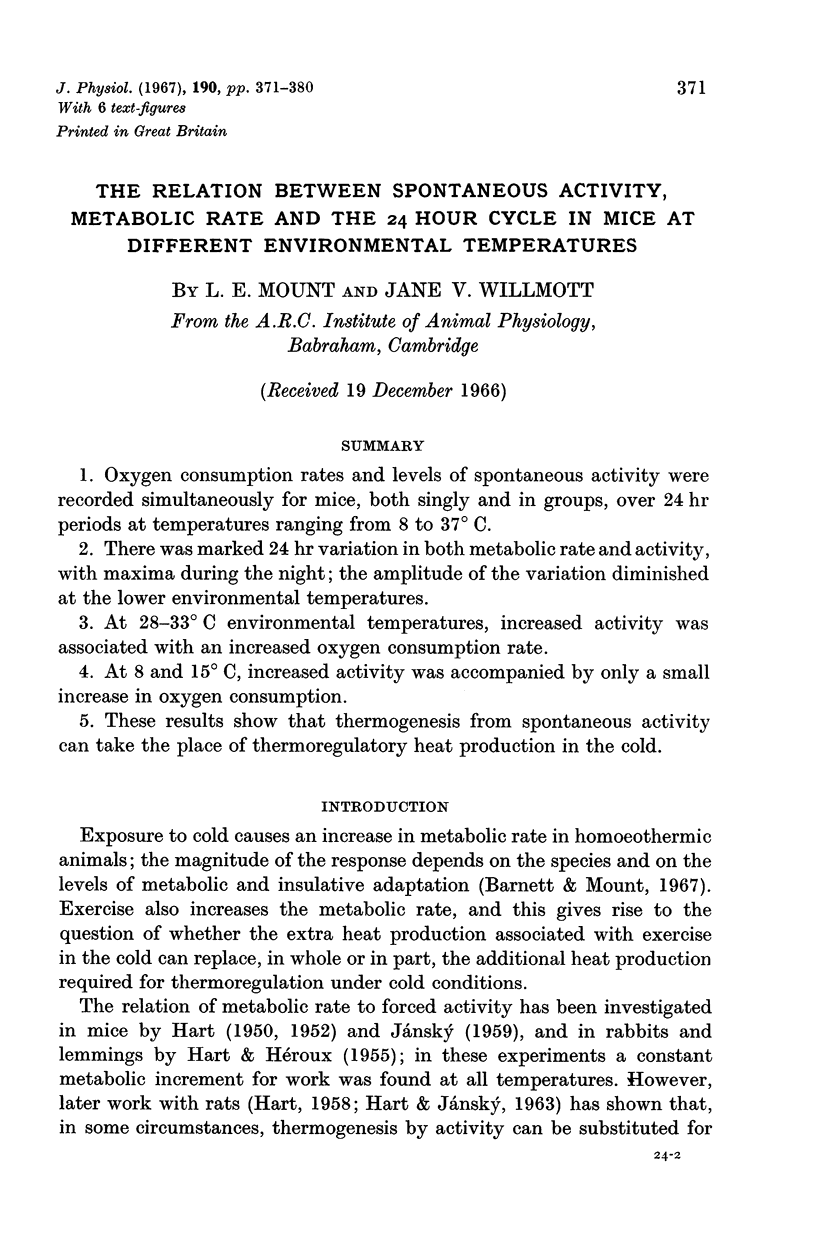
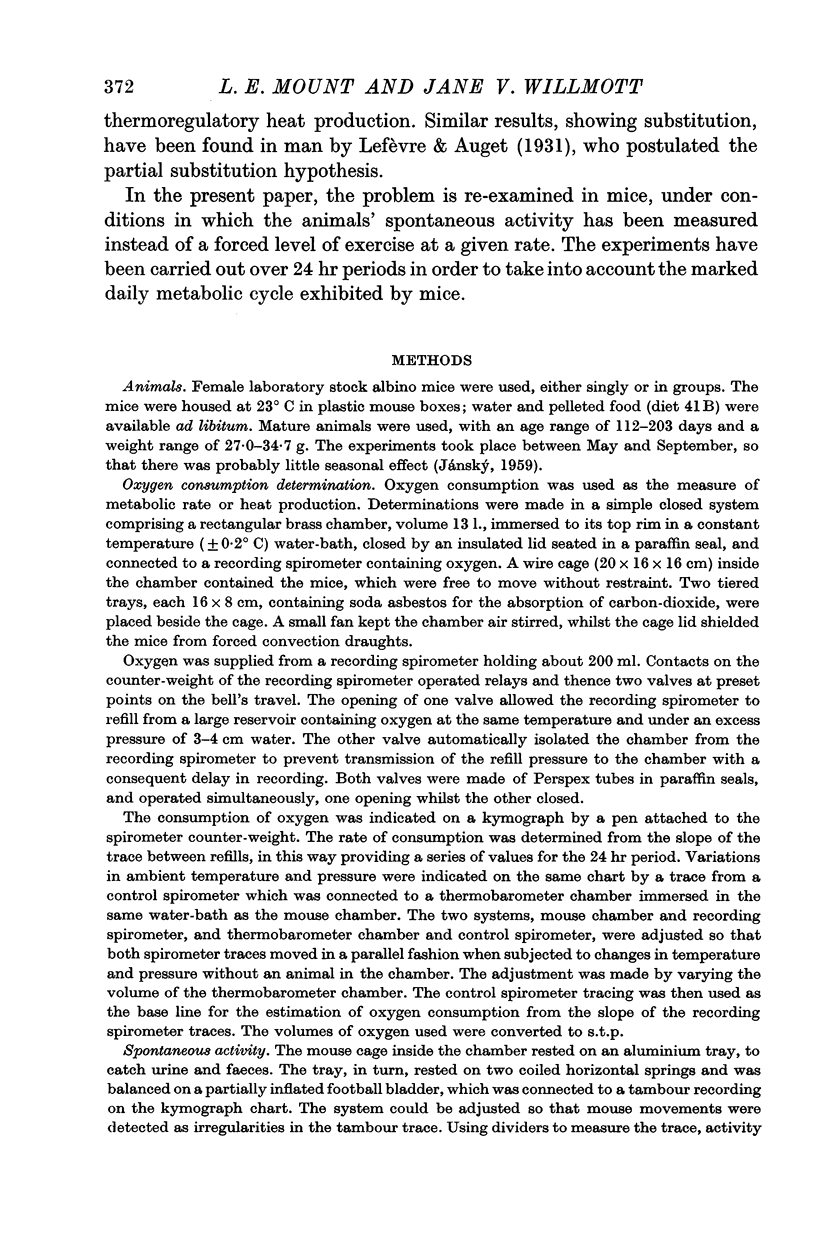
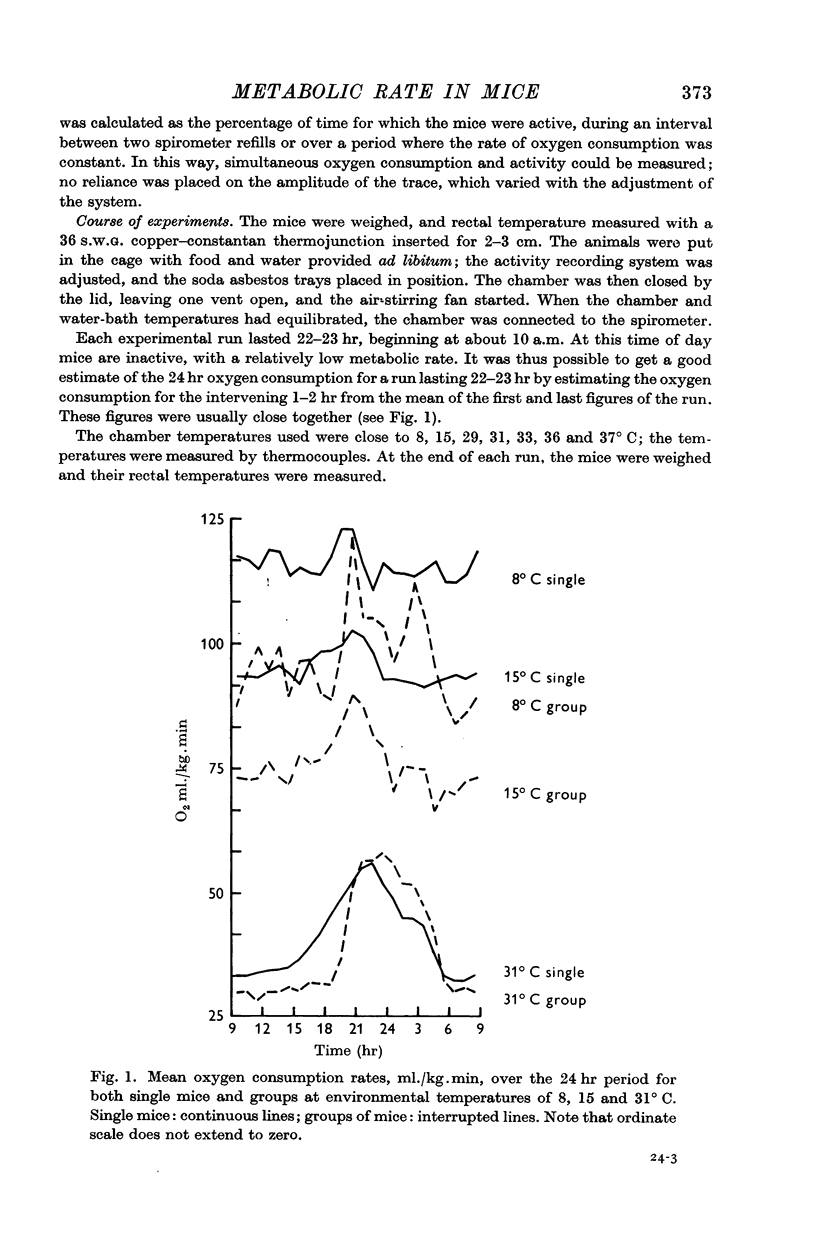
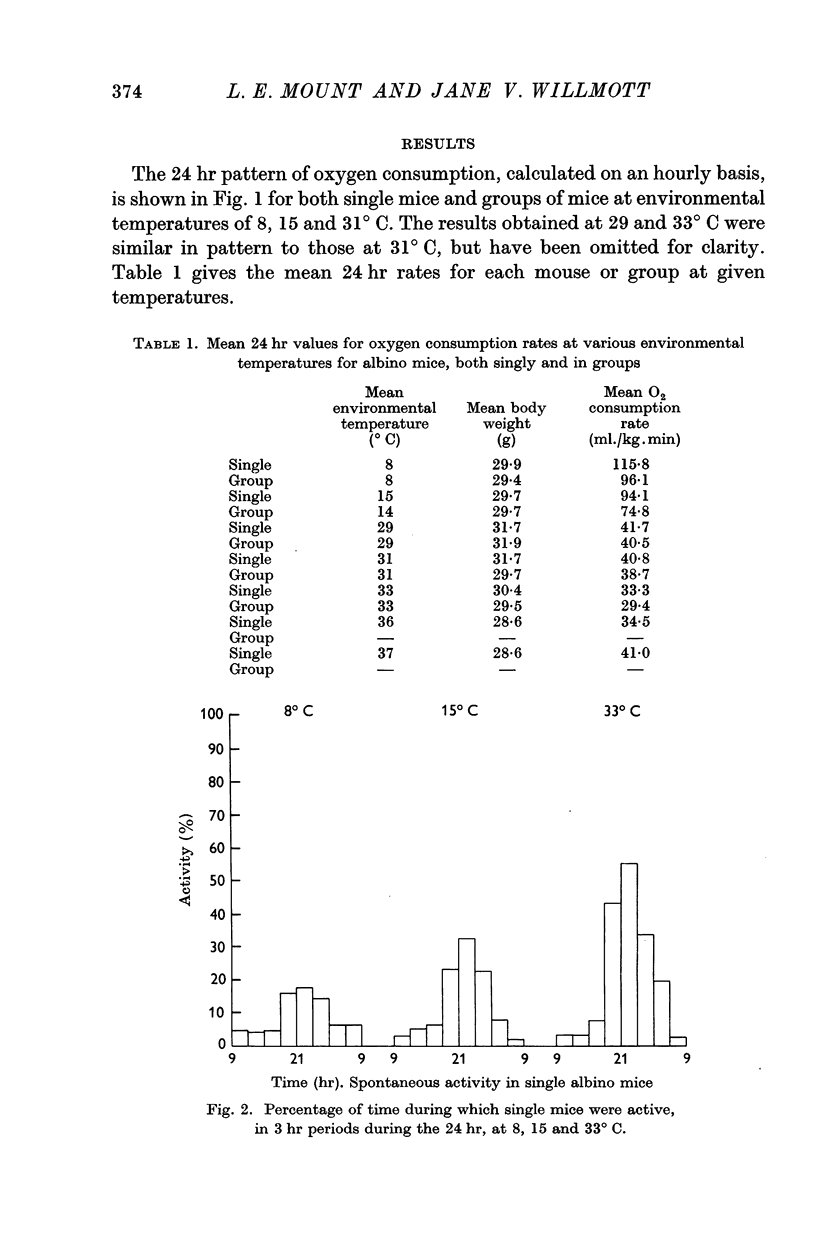
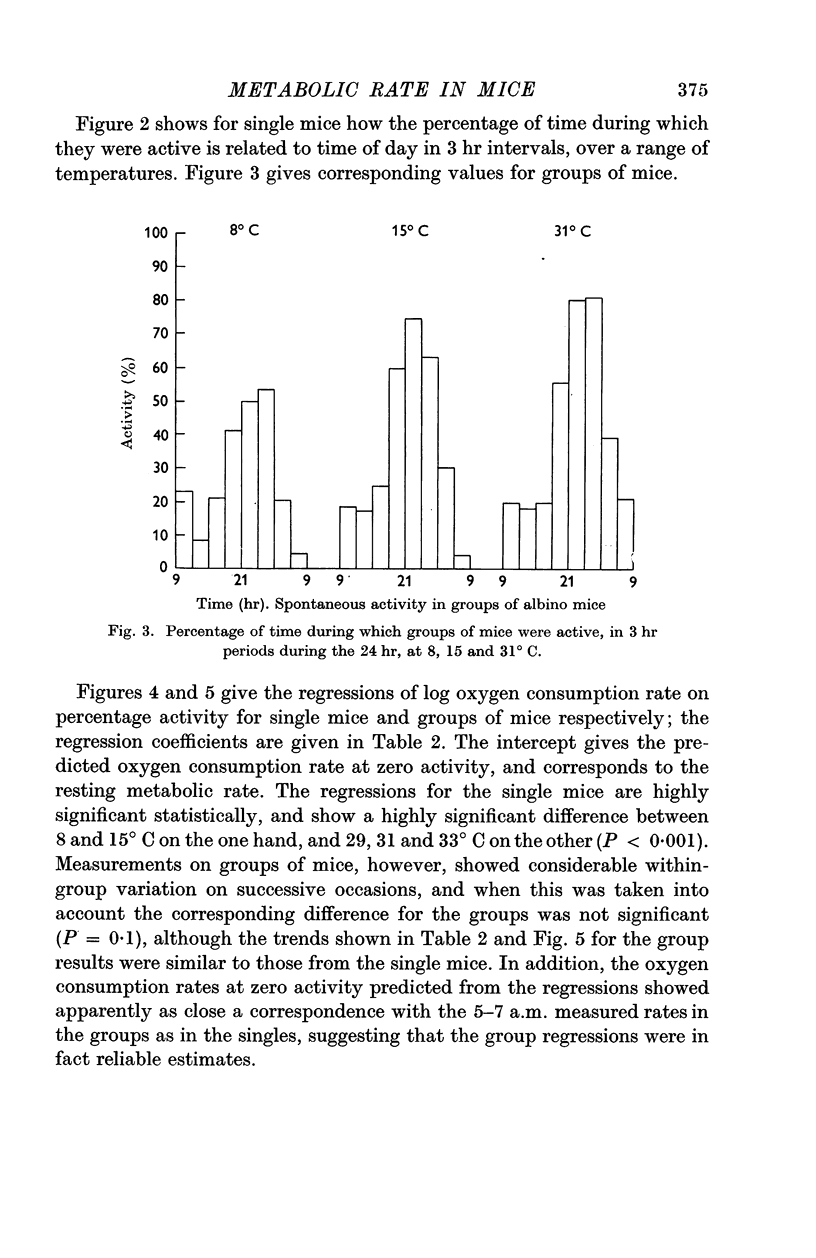
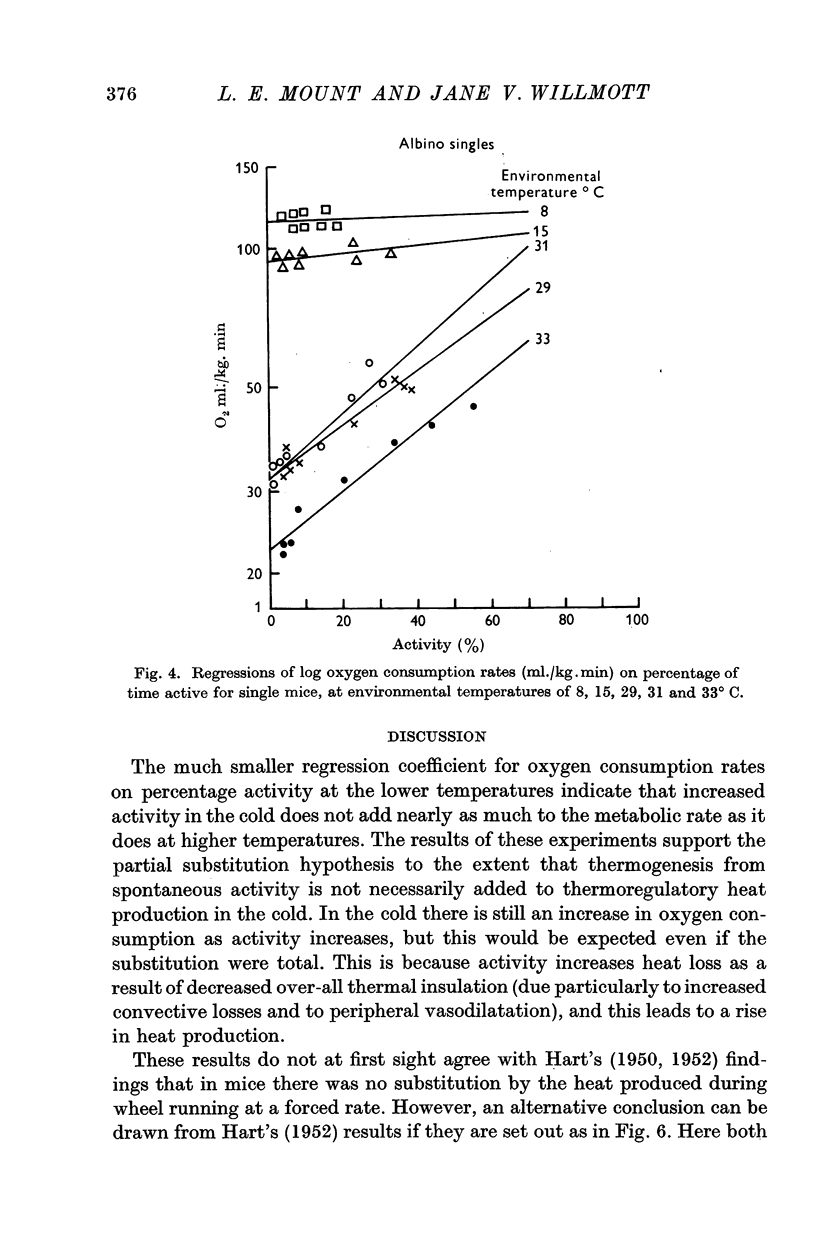
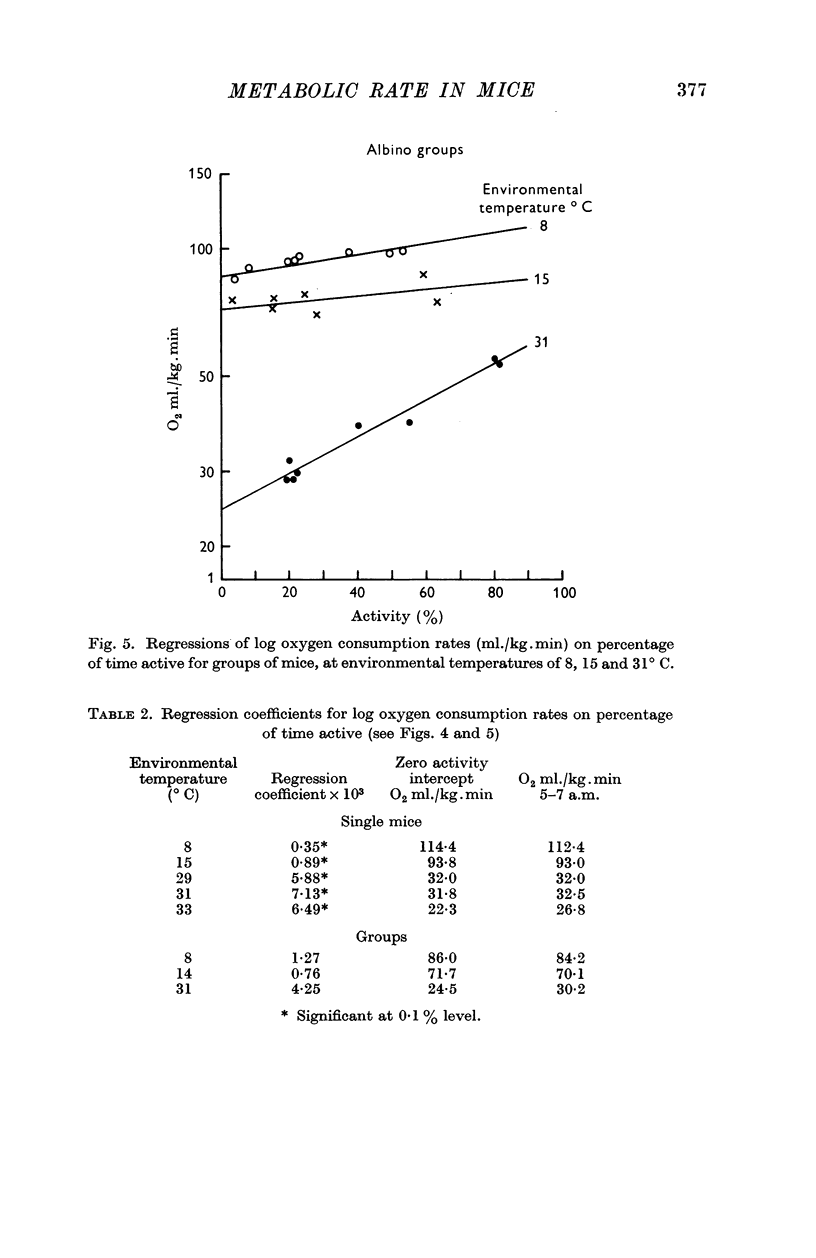
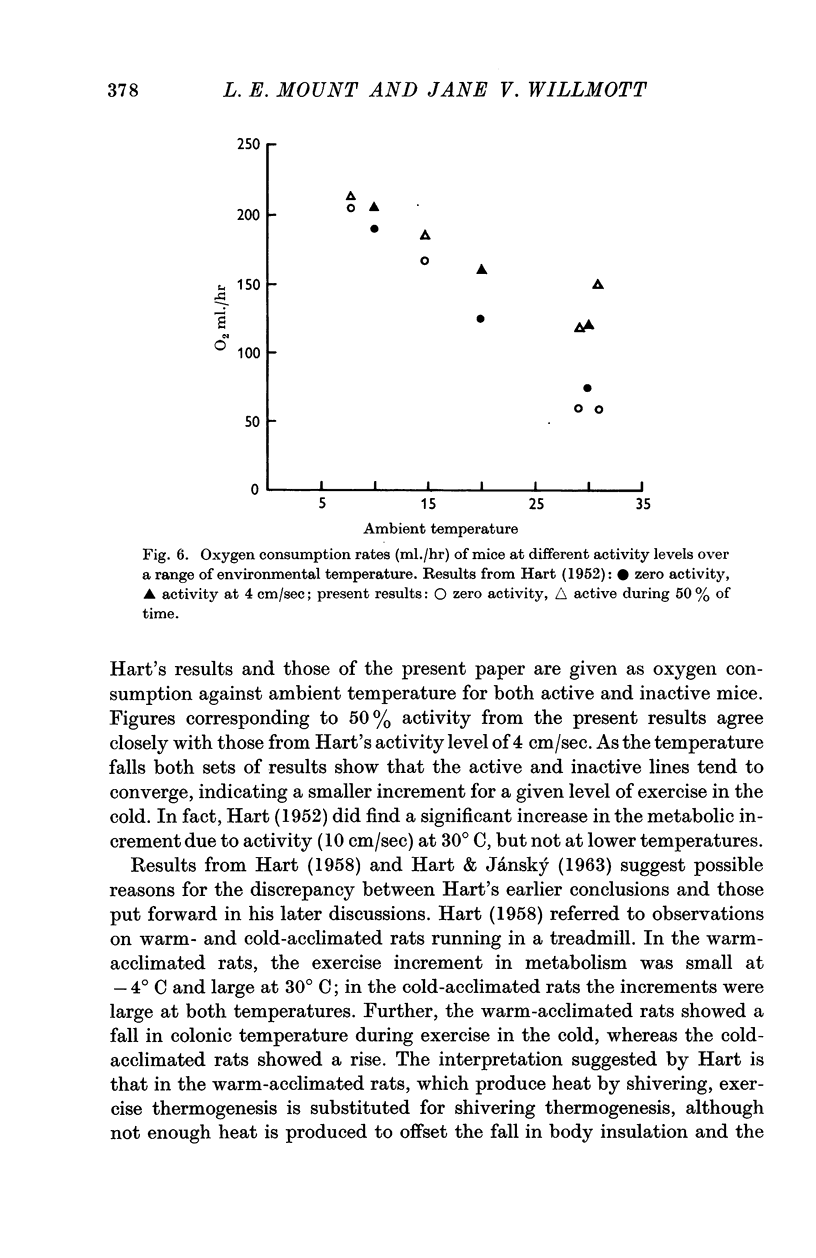
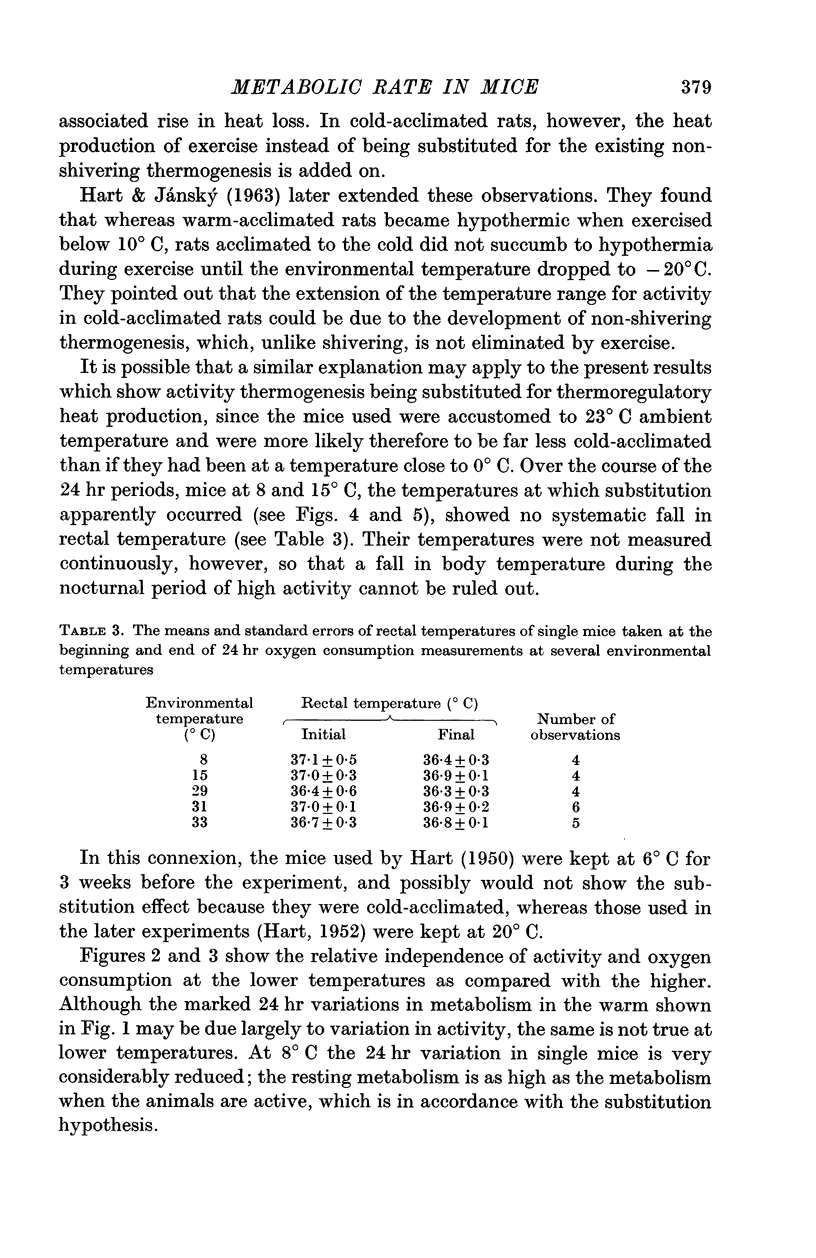

Selected References
These references are in PubMed. This may not be the complete list of references from this article.
- HART J. S., HEROUX O. Exercise and temperature regulation in lemmings and rabbits. Can J Biochem Physiol. 1955 May;33(3):428–435. [PubMed] [Google Scholar]
- HART J. S., JANSKY L. Thermogenesis due to exercise and cold in warm- and cold-acclimated rats. Can J Biochem Physiol. 1963 Mar;41:629–634. [PubMed] [Google Scholar]
- Müller-Beissenhirtz P., Ohnesorge F. K. Der Sauerstoffverbrauch von Mäusen in verschiedenen Umgebungstemperaturen. Pflugers Arch Gesamte Physiol Menschen Tiere. 1966;289(2):98–108. [PubMed] [Google Scholar]


